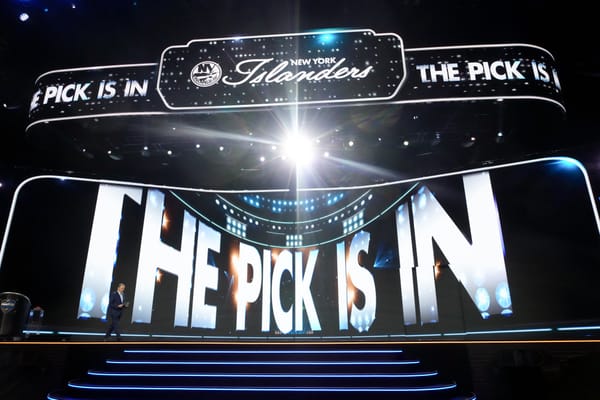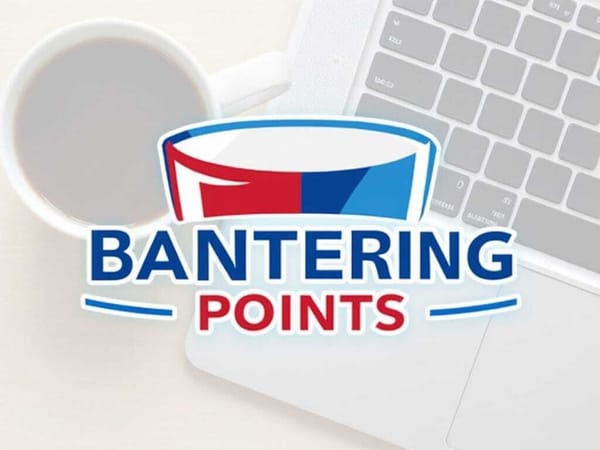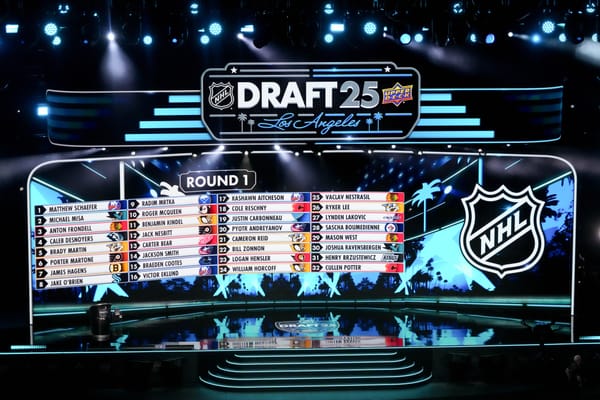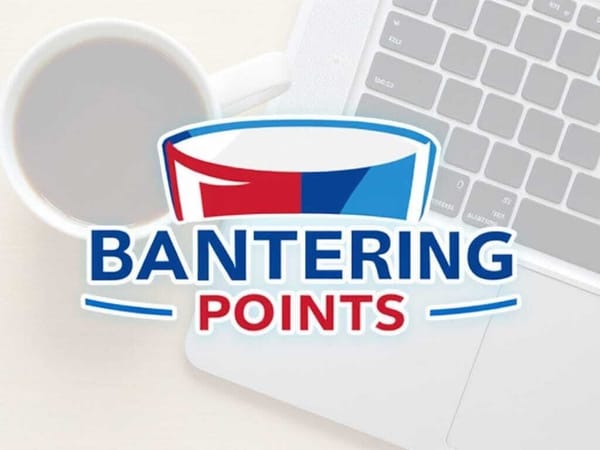Thoughts on Thursday: Regression, Competition, and Traverse City
1. Every season, certain players manage to exceed expectations and head into the following season looking to repeat their performance. Unfortunately, most of those players fail to reach their heightened goals, and the result tends to be some combination of an angry fan base as well as disappointed decision makers within the organization.
In a similar vein, players who underachieve relative to expectations can find themselves in a precarious position heading into the offseason. Rumors of a reduced role, a trade, or a buyouts can circulate and impact the player. However, it can also lower a player’s expectations to a more reasonable level for the upcoming season, and leave fans, coaches, and managers satisfied with future performance.
One way to avoid falling into traps like those two is to acknowledge when a player may have had an extended run of good or bad luck that influenced their performance. We’ve seen things like this happen in the past, such as Kevin Klein’s crash back down to Earth last season, or Rick Nash failing to replicate or even come close to his 42 goal, 69 point effort from the 2014-15 campaign. Some of the Rangers’ players have experienced the opposite as well, such as Mats Zuccarello’s 49 point effort in 14-15, which he inevitably bounced back from and has averaged 60 points over the last two seasons.
While the Blueshirts don’t appear to have anybody primed to experience positive regression like Zuccarello did, they do have a single prime candidate who will likely see some amount of negative regression. The obvious name that comes to mind is the team’s speedy Austrian winger, Michael Grabner. Heading into the season, nobody would have imagined Grabner coming one goal away from leading the team, but that’s exactly where he found himself at the end of the season.
Prior to last season, Grabner was a career 11.7% shooter (104 goals on 889 shots). In his first season Broadway, he shot 16.7% (27 goals on 162 shots), which was a full five percentage points higher than his career average, as well as 1.8% higher than his previous career high of 14.9% back in 2010-11. Had he shot his career average, Grabner would have ended the season with 19 goals, which is still nothing to scoff at, but not nearly as eye-opening as the 27 he actually did score.
Given New York’s lack of forward depth this season, combined with Grabner’s likely regression towards his normal shooting percentage, somewhere in the neighborhood of 12 to 18 goals seems like a reasonable estimate for him. Fortunately, a little less puck luck won’t affect Grabner’s skating or forechecking, so he’ll remain a dangerous player whenever he hops over the boards nonetheless.
2. With the Rangers hitting the ice for informal team skates, it finally looks safe to conclude that most of the teams around the NHL are done adding major pieces for the upcoming season. Since that conclusion can be made, now is a good time to loom around the Eastern Conference and evaluate who will serve as the biggest roadblocks between the Rangers and a parade down the Canyon of Heroes.
Using Dawson Sprigings Goals Above Replacement data, (who you should check out here) Sean Tierney created a graph portraying how each team improved or got worse since free agency kicked off, and the Rangers appear to be in good shape:
This is total GAR +/-.
— Sean Tierney (@ChartingHockey) July 9, 2017
CAR's offseason has been a big success. DAL, TOR, ARI have added value too.
CHI, WSH, FLA, and PIT have lost most. pic.twitter.com/4D7uxMSePR
Keep in mind that the data was current as of July 9th, so UFA signings since then like Johnny Oduya and Matt Cullen don’t factor into the equation. Despite that, the Rangers are the 5th most improved team according to Sprigings’ metric. Even though New York gave away Derek Stepan and Antti Raanta for quarters on the dollar, swapping out Dan Girardi for Kevin Shattenkirk and signing David Desharnais to shore up their center depth has resulted in a net positive.
The East’s two best teams, Washington and Pittsburgh, have both lost numerous key players. Shattenkirk, Justin Williams, and Nate Schmidt have left our nation’s capital for greener pastures, while Cullen, Nick Bonino, Chris Kunitz, Ron Hainsey and Trevor Daley are among the notable Penguins that chased money after winning the Stanley Cup.
Toronto improved with the additions of Hainsey, Patrick Marleau, and former Ranger Dominic Moore, and they can count on their young players like Auston Matthews, Mitch Marner, and William Nylander to continue their rise to stardom. However, the Maple Leafs are unlikely to be a major factor in New York’s season due to their spot in the Atlantic Division.
The main team that Jeff Gorton, Alain Vigneault, and the rest of the franchise should be concerned about is the Carolina Hurricanes. While the Hurricanes biggest splash was bringing Justin Williams back to Raleigh for a second tour of duty, a number of under-the-radar moves have turned them into a dangerous team to keep an eye on. Ron Francis made a shrewd move to upgrade his 4th line by cutting ties with Jay McClement and signing Josh Jooris to replace him. The team’s acquisition of Scott Darling should change their fortunes for the better as well, unless they decide to force feed Cam Ward more starts than he deserves.
3. For the 11th consecutive year, the Rangers will be sending a team of prospects to represent the organization at the annual Traverse City tournament. Both Lias Andersson and Filip Chytil will suit up in the tournament, as well as number of the team’s other highly regarded prospects including Sean Day, Ty Ronning, and recent free agent signings Alexei Bereglazov, Alexander Georgiev, and Neal Pionk.
Getting to watch any form of Rangers hockey is a sight for sore eyes after going four months without it. Even if it’s just a bunch of kids, most of whom will never see a second of meaningful ice time at Madison Square Garden, it’s better than no hockey at all. The only caveat to keep in mind about the tournament is to be cautious about drawing any meaningful conclusions from the players’ performance.
Seeing players like Andersson, Pionk, and Bereglazov perform well would obviously be preferable, and nobody wants to see them look outclassed. As the three prospects with the highest chances of making New York’s roster on opening night, how they look against other team’s prospects shouldn’t be something to worry about. Even though the pre-season isn’t much better in terms of competition, it’s much closer to the on-ice product the NHL provides than any prospect tournament.
The best part about that is the fact that the pre-season itself is mostly useless in seeing if a prospect is ready for the NHL or not. Teams comprised of career minor leaguers, raw prospects, and NHL veterans playing not to get injured doesn’t come close to emulating the pace of a regular season contest. Unfortunately, it’s all coaches have to base their decisions on, so the team’s NHL-hopefuls better make the most of it.
4. Since the calendar turns to September tomorrow, the time has sadly come for me to stop writing pieces for the time being. With classes starting tomorrow for me, as well as the fact that coming up with relevant article topics has been getting more and more difficult as the summer progressed, I’m not going to have the time to continue writing as much as I have since the season ended.
On the bright side, Bantering Points will be returning once training camp opens up in the next couple of weeks. With that being said, thank you to everyone who’s read my work since the season ended. Visiting a hockey blog through the dog days of summer can’t be easy, but the brave souls that pass through here on a daily basis did exactly that.





